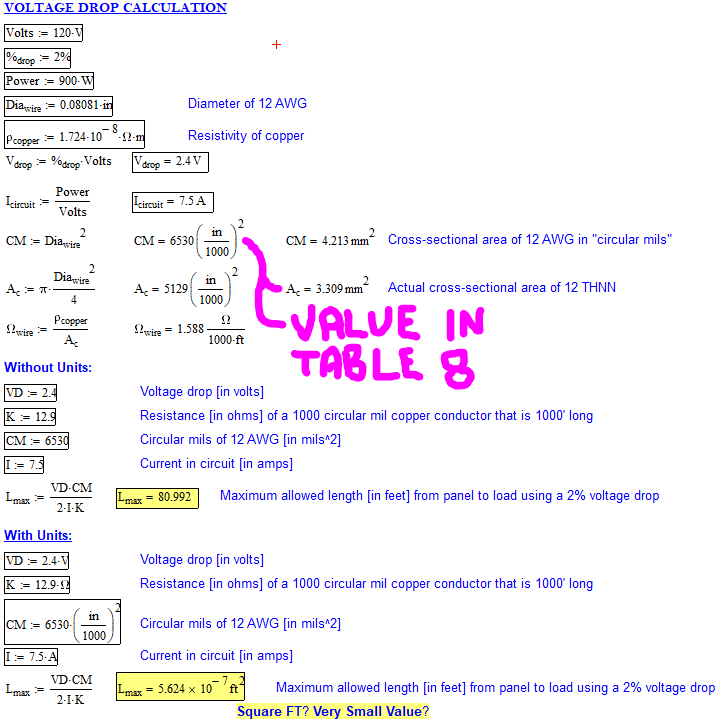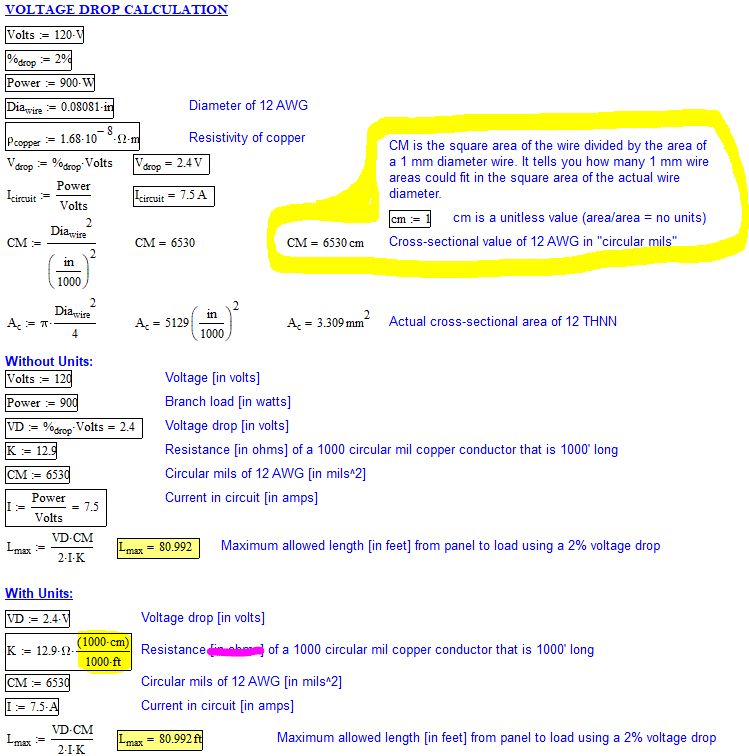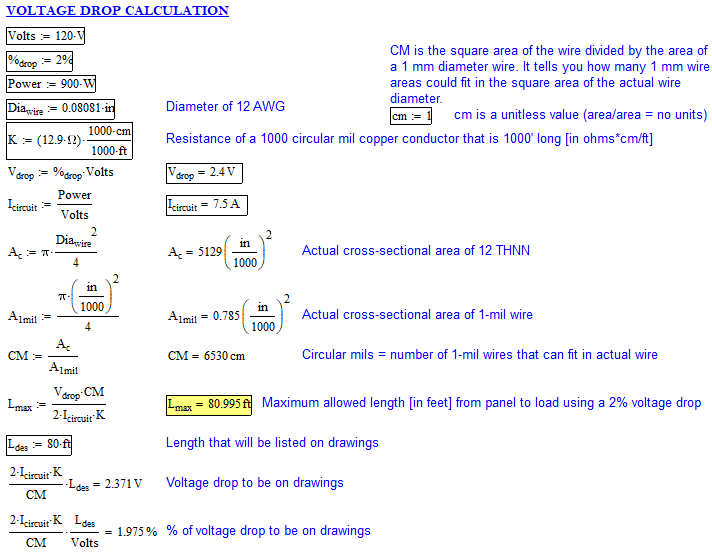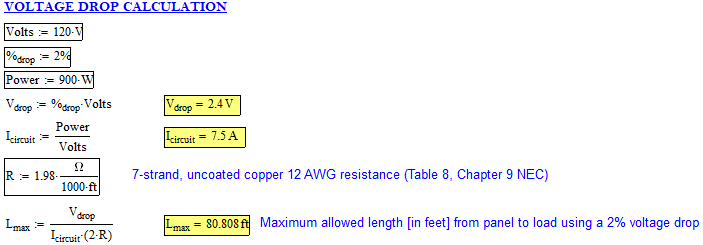P1ENG
Structural
- Aug 25, 2010
- 237
I am a structural engineer tasked with finding the maximum wire run length for a simple modular building. The panel has 120v receps with the branch load rating of 900 Watts. So, I'm working with 7.5 amps. I am allowed 2% voltage drop on the branch circuit (ASHRAE requirement I believe). Googling has allowed me to find my answer, but the equation isn't sitting right with me and in the interest of getting a better understanding, I have some questions.
First, the voltage drop equation using the circular mils approach is fairly easy if you don't consider units in the equation:
VD = 2*Length*Load*K / CM
Therefore Length= VD*CM/(2*Load*K)= 2.4*6530/(2*7.5*12.9) = 80.99 feet... easy.
Where:
[ul]
[li]VD = voltage drop = 2.4 (120v * 2%)[/li]
[li]Length = solved value in ft[/li]
[li]K = 12.9 Ohms (found via several google searches, don't know how it is derived or where to find this value in NEC). I have found that resistivity of copper is 1.724x10^-8 Ohm*meter @ 20 degrees C, but I can't correlate this into the K value @ 75 degreees C.[/li]
[li]CM = Circular mils = 6530 for 12 AWG (I understand this is the wire diameter squared, so this should be in [in/1000]^2). However, in Table 8 of Chapter 9, the area column is given in mm^2 and Circular mils and converting one to the other does not result in the same value.[/li]
[/ul]
However, if you include the units in the equation, the equation spits out a value of area instead of length. How can EE's work off of equations where units don't cancel out? I'm going crazy trying to figure out how to resolve the answer if I leave the units in the equation. Besides that, I'm struggling to understand K (how to calculate it or where to look it up). Has the NEC and/or the internet values I found actually have the units I described or is there some weird short-hand going on like when people talk about their tire pressure and they say 40 pounds instead of 40 pounds per square inch?

Juston Fluckey, SE, PE, AWS CWI
Engineering Consultant
First, the voltage drop equation using the circular mils approach is fairly easy if you don't consider units in the equation:
VD = 2*Length*Load*K / CM
Therefore Length= VD*CM/(2*Load*K)= 2.4*6530/(2*7.5*12.9) = 80.99 feet... easy.
Where:
[ul]
[li]VD = voltage drop = 2.4 (120v * 2%)[/li]
[li]Length = solved value in ft[/li]
[li]K = 12.9 Ohms (found via several google searches, don't know how it is derived or where to find this value in NEC). I have found that resistivity of copper is 1.724x10^-8 Ohm*meter @ 20 degrees C, but I can't correlate this into the K value @ 75 degreees C.[/li]
[li]CM = Circular mils = 6530 for 12 AWG (I understand this is the wire diameter squared, so this should be in [in/1000]^2). However, in Table 8 of Chapter 9, the area column is given in mm^2 and Circular mils and converting one to the other does not result in the same value.[/li]
[/ul]
However, if you include the units in the equation, the equation spits out a value of area instead of length. How can EE's work off of equations where units don't cancel out? I'm going crazy trying to figure out how to resolve the answer if I leave the units in the equation. Besides that, I'm struggling to understand K (how to calculate it or where to look it up). Has the NEC and/or the internet values I found actually have the units I described or is there some weird short-hand going on like when people talk about their tire pressure and they say 40 pounds instead of 40 pounds per square inch?

Juston Fluckey, SE, PE, AWS CWI
Engineering Consultant




